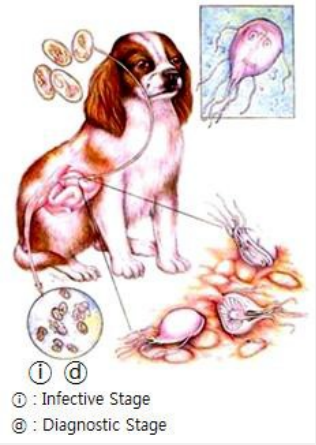


For those who experience symptoms, the length of time they could last remains unclear
For some who test positive for COVID, symptoms can last much longer as part of a condition known as "long COVID."
Newer variants, including the highly contagious BA.4 and BA.5 omicron subvariants currently making up a majority of cases in the Midwest, are leading to an in increase in those experiencing symptoms, according to Chicago's top doctor.
Chicago Department of Public Health Commissioner Dr. Allison Arwady said that while symptoms remain similar to previous cases, there is one noticeable shift.
"Nothing really significantly different, I would say, but just more symptoms. It's a more virulent infection," Arwady said during a Facebook live Tuesday.
Some doctors and researchers believe that because these new variants spread so rapidly, they more commonly impact mucosal immunity as opposed to longer-lasting immunity, Arwady noted.
The latest variants tend to sit in the nasal passage and cause infection, she said, instead of settling in the lungs.
But for those who experience symptoms, the length of time they could last remains unclear.
According to the CDC, COVID symptoms can appear anywhere from two to 14 days after someone is exposed to the virus. You can end isolation after five full days if you are fever-free for 24 hours without the use of fever-reducing medication and your other symptoms have improved.
The CDC says most people with COVID-19 "get better within a few days to a few weeks after infection."
For some, symptoms may last even longer.
"Post-COVID conditions can include a wide range of ongoing health problems," the CDC states. "These conditions can last weeks, months, or years."
A recent study from Northwestern Medicine showed that many so-called COVID "long-haulers" continue to experience symptoms like brain fog, tingling, headaches, dizziness, blurred vision, tinnitus and fatigue an average of 15 months after the onset of the virus. "Long-haulers,” are defined as individuals who have had COVID symptoms for six or more weeks, the hospital system has said.
But, according to the CDC, four weeks after infection is when post-COVID conditions could first be identified.
"Most people with post-COVID conditions experienced symptoms days after their SARS CoV-2 infection when they knew they had COVID-19, but some people with post-COVID conditions did not notice when they first had an infection," the CDC states.
Arwady noted that coughs can often linger up to a month after testing positive for the virus, even if a patient isn't contagious anymore.
"The cough tends to be what lingers," Arwady said. "That doesn't mean that you're still infectious. It's that you've had a lot of inflammation in your airways and the cough is your body's attempt to sort of continue to expel any potential invader and allow it to calm down. So...I would not consider you contagious."
She also warned that people should not "try to 'get COVID to get it over with'" in part because of the risk of long COVID symptoms.
"We are hearing people trying to do that. This does nothing to help us get over COVID as a city," she said. "It also is potentially dangerous given that we don't always know who is likely to have more severe outcomes, and there are people who get long COVID. Don't think that getting COVID means you'll never get COVID again. We see plenty of people get re-infected with COVID. The vaccine is the most important thing for protection."
Researchers at the University of Illinois College of Medicine are collaborating on a landmark study that will look into the causes of so-called “long COVID,” as well as ways to potentially prevent and treat the illness.
According to a press release by the U of I’s campus in Peoria, the work will pair up scientists from the school’s Peoria and Chicago campuses, with $22 million in funding from the National Institutes of Health to back the project.
Long-COVID symptoms can range from a wide variety of ailments, some of which may even disappear and then return later.
"Post-COVID conditions may not affect everyone the same way. People with post-COVID conditions may experience health problems from different types and combinations of symptoms happening over different lengths of time," the CDC reports. "Most patients’ symptoms slowly improve with time. However, for some people, post-COVID conditions may last months, and potentially years, after COVID-19 illness and may sometimes result in disability."

Symptoms of Long COVID
According to the CDC, the most common long symptoms include:
General symptoms
Tiredness or fatigue that interferes with daily life
Symptoms that get worse after physical or mental effort (also known as “post-exertional malaise”)
Fever
Respiratory and heart symptoms
Difficulty breathing or shortness of breath
Cough
Chest pain Fast-beating or pounding heart (also known as heart palpitations)
Neurological symptoms
Difficulty thinking or concentrating (sometimes referred to as “brain fog”)
Digestive symptoms
Diarrhea
Stomach pain
Other symptoms
Joint or muscle pain
Rash
Changes in menstrual cycles
Headache
Sleep problems
Dizziness when you stand up (lightheadedness)
Pins-and-needles feelings
Change in smell or taste
Depression or anxiety
Sometimes, the symptoms can be difficult to explain. Some may even experience multiorgan effects or autoimmune conditions with symptoms lasting weeks or months after COVID-19 illness, the CDC reports.
This article tagged under:
COVID SYMPTOMSCOVIDCOVID QUARANTINECDC COVID GUIDELINESHOW LONG SHOULD YOU QUARANTINE WITH COVID.
Post time: Oct-19-2022

